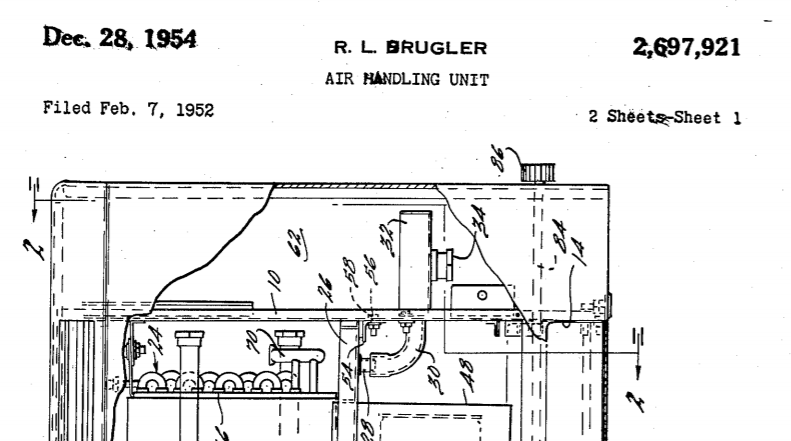Energy Efficiency | April 26, 2019
Why You Should Look into AHU Refurbishment for Your Facility
What’s both central to the HVAC system and a large consumer of energy costs for your facility? The Air Handling Unit (or AHU). Air Handling Units condition and circulate air in a building or facility as part of the heating, ventilating, and air-conditioning (HVAC) system. AHUs work hard and constantly to maintain a comfortable building environment. If the building is to remain comfortable, the air handlers need to operate without issue. We frequently see AHUs that are 25-50+ years old, are still in service and don’t always run as well as they did at the beginning of their life, making AHU refurbishment a much needed step to ensure your facility functions normally and doesn't waste unnecessary energy -- or money.
The typical lifespan of an Air Handling Unit is considered to be 20 to 25 years. Many times, the AHU labors away out of sight in a mechanical room. As long as it is still operating and producing air flow however, facility managers defer replacement. Replacing an AHU is a relatively large capital expense.
Why should you pursue AHU refurbishment?
AHU performance typically deteriorates over the years and the space it serves is therefore unevenly and poorly conditioned. After a while however, there’s often general acceptance of poor temperature control and poor ventilation as being “just the way it is.” We also often find that space use has significantly changed over the life of the AHU and modern controls can reduce the energy use by tracking space occupancy and reducing air flow and conditioning of outside air. While we can now make AHUs run much more efficiently, they didn’t start that way.

History and Development of the Air Handling Unit (AHU)
AHUs were invented as part of the development of the complete HVAC system. Although various methods of cooling, from evaporation to using tons of ice were employed in an attempt to cool down spaces, it wasn’t until the twentieth century that HVAC systems, as they are known today, were invented.
-
In 1902, Willis Carrier was credited with designing the first modern air conditioning system for the Sacketts-Wilhems Printing Company, to help solve a humidity issue that was causing magazine pages to wrinkle. Similar to HVAC systems today, his design, titled “apparatus for treating air,” included elements that would evolve into air handlers – coils, fans, an “air-purifying apparatus.”
-
In 1935, a patent for an “air conduit system for buildings” was filed by Henry E. Durst, in which he refers to part of the system, “including an air handling unit and in which the ducts for the air flowing away from the air heating or air conditioning apparatus to the rooms of the building are encased for at least a portion of their length in the means for returning the air to such apparatus.” This early reference shows how the AHU has been important to the larger HVAC system, specifically designed to supply and return air, from the start.
-
In 1954, R. L. Berger filed a patent for Chrysler, titled simply “air handling unit.” This patent’s objective was to improve upon several parts of the young AHU invention, including a damper mechanism, the heat exchange apparatus, a condensate tray and a mounting for the blower mechanism.
It’s not clear exactly when the “first” AHU was created. But between the introduction of air conditioning in the early 1900s and the refinement of this technology in the 1930s-1950s, air handlers were developed, improved upon and finalized as the models found in buildings today.
How to Retrofit an Air Handling Unit
The energy savings available when upgrading air handlers, coupled with utility incentives, make it cost effective to redesign and refurbish the AHU as an alternative to a complete replacement. The process also greatly improves the comfort level of the space.
AHU refurbishment or retrofitting typically includes:
-
Replace steam and chilled water coils
-
Change the centrifugal fan to a fan array with ECM motors
-
Apply an internal epoxy coating
-
Install Building Automation System controls
With these improvements, it is not uncommon to reduce the energy use of the AHU by 40% or more and extend its life by 15-20 years.
Related Posts
Discover more content and insights from Mantis Innovation

The Cost of Inaction: Why Businesses Should Act Now on Energy Efficiency
In today's fast-paced business environment, the financial and operational losses businesses incur by delaying energy efficiency improvements, the "cost of inaction," is more relevant than ever.

In today’s AI era, human intelligence is the key to data center facility and energy optimization
Nowhere else in modern industry do artificial and human intelligence converge with such transformative potential as in the world of data centers. As AI's extraordinary growth accelerates demand for

Your Guide to LED Lighting for Business and Commercial Buildings
Never to be underestimated, LED lighting and well-designed lighting retrofits and upgrades offer businesses big improvements like reduced energy costs, reduced emissions, and improved working

Five Trends Driving Data Center Facility Energy Optimization
Today’s digital economy, commercial and industrial digitalization, and the recent explosion in artificial intelligence and machine learning (AI/ML) powered computing are driving massive growth in
